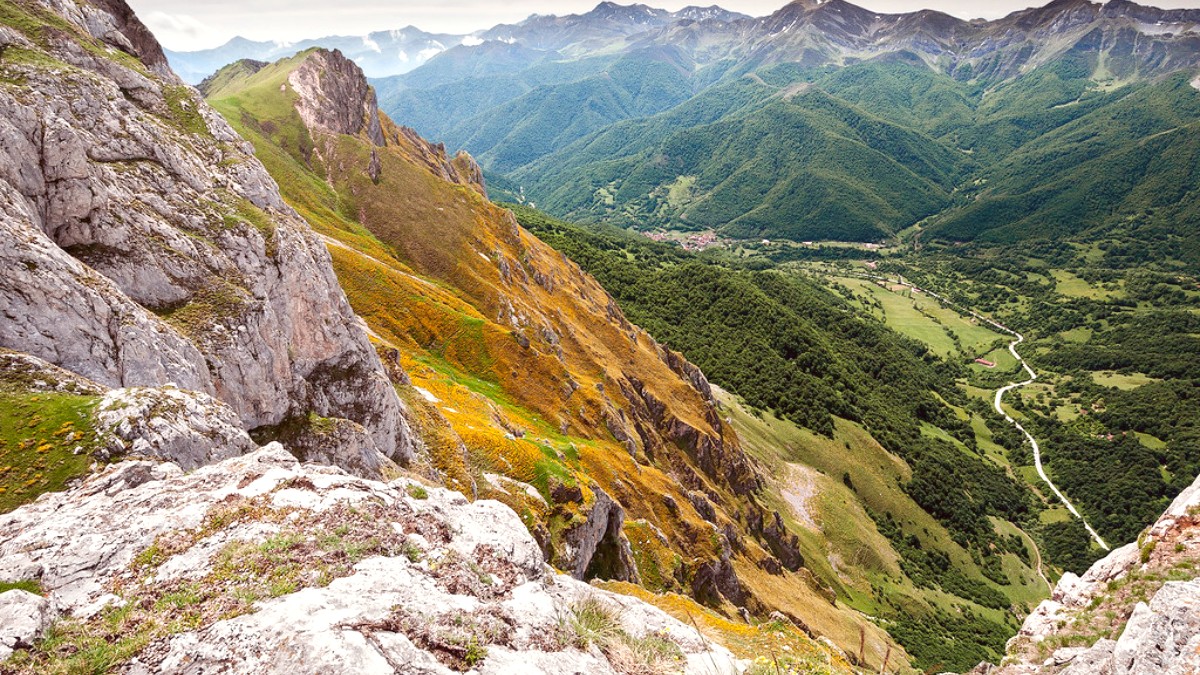
Spain
Even in summer, a warm base layer and a good jacket are prudent for evenings or unexpected weather. Materials like merino wool or synthetics (polyester, nylon) are top choices; they wick sweat away from skin, keeping you dry and comfortable. Avoid cotton for anything beyond casual wear; it absorbs moisture and dries slowly, leading to chilling.
Modest attire shows respect in religious sites. Shoulders and knees should be covered. Avoid overly revealing clothing in churches or traditional villages. For hiking, sturdy, quick-drying hiking trousers or shorts suit. Avoid cotton for intense hikes. A reliable Rain jacket and Rain pants are non-negotiable.
Waterproof hiking boots with good ankle support and sturdy grip are highly suggested for varied terrain. Break them in before your trip.
Bring several pairs of good quality, moisture-wicking Hiking socks (merino wool or synthetic blend). Avoid cotton socks for hiking.
Comfortable shoes or Sandals are good for evenings. Water shoes are valuable for canyoning or river exploration.
Keeping documents organized and accessible aids smooth travel. Have both physical and digital copies. Store digital copies securely on your phone, in cloud storage, and email them to yourself.
Modern travel frequently uses electronics. Plan for power, connectivity, and navigation tools. Spain uses 230V at 50Hz (Type F/E plugs). Most modern electronics are dual voltage. A Universal travel adapter is needed. If not dual voltage, use a Voltage converter.
Picos de Europa is a photographer's dream. A mirrorless or DSLR camera with a versatile lens (e.g., 24-70mm equivalent) is ideal. A Wide-angle lens (e.g., 16-35mm equivalent) is useful. A sturdy Tripod aids sunrise/sunset shots. Pack spare batteries. Consider B&H Photo for gear needs.
Use cloud storage (Google Drive, Dropbox, iCloud) for photos/documents. Consider a small Portable hard drive for large photo collections.
A Virtual Private Network (VPN) like NordVPN or ExpressVPN can secure your internet connection, especially on public Wi-Fi networks.
Consider two-factor authentication for online accounts and a strong password manager.
A prepared health kit aids prompt minor issue handling and personal medical need management. Carry all prescription medications in original containers with clear labeling. Bring a prescription copy and doctor's note.
Over-the-counter remedies for common issues include cold and flu remedies, indigestion tablets, antacids, and motion sickness pills (for winding mountain roads).
Your specific activity plans determine additional gear. For single-day hikes, a daypack is standard.
Map and compass or a reliable GPS device/app are important for navigation. Even with GPS, a physical map backs you up.
For technical climbing or winter mountaineering, specialized gear is needed. These activities are best undertaken with a guided tour.
Beyond clothing, documents, and specialized gear, a few other items aid a comfortable, prepared trip. Neck pillow, Eye mask, and Earplugs make long journeys or shared dorms more comfortable.
Basic toiletries, snacks, and general clothing are readily available in local supermarkets and pharmacies. However, specific brands or specialty items might not be.
Reduces waste from disposable cups.
Avoids single-use plastic cutlery.
Shampoo/soap bars cut down on plastic bottles.
Treats water from natural sources, less bottled water.
Roll clothes tightly to save space and reduce wrinkles. Use packing cubes to organize items within your luggage.
Place heavier items at the bottom of your backpack or suitcase for better balance.